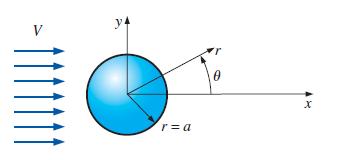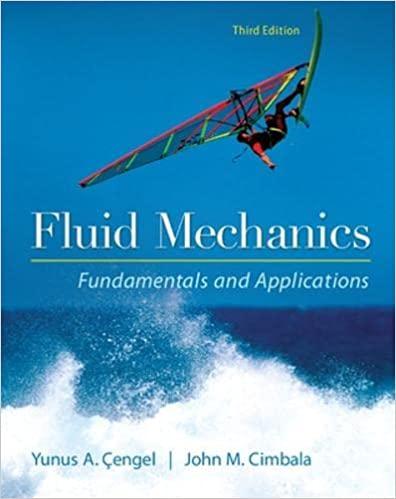Based on your results of Prob. 4119, discuss the compressibility (or incompressibility) of this flow. Data from
Question:
Based on your results of Prob. 4–119, discuss the compressibility (or incompressibility) of this flow.
Data from problem 119
Consider the flow field of Prob. 4–116 (flow over a circular cylinder). Calculate the two linear strain rates in the rθ-plane; i.e., calculate εrr and εθθ. Discuss whether fluid line segments stretch (or shrink) in this flow field.
Data from problem 116
There are numerous occasions in which a fairly uniform free-stream flow encounters a long circular cylinder aligned normal to the flow (Fig. P4–116). Examples include air flowing around a car antenna, wind blowing against a flag pole or telephone pole, wind hitting electrical wires, and ocean currents impinging on the submerged round beams that support oil platforms. In all these cases, the flow at the rear of the cylinder is separated and unsteady, and usually turbulent. However, the flow in the front half of the cylinder is much more steady and predictable. In fact, except for a very thin boundary layer near the cylinder surface, the flow field may be approximated by the following steady, two-dimensional velocity components in the xy- or rθ-plane:

Is this flow field rotational or irrotational? Explain.
FIGURE P4–116

Step by Step Answer:

Fluid Mechanics Fundamentals And Applications
ISBN: 9780073380322
3rd Edition
Authors: Yunus Cengel, John Cimbala





